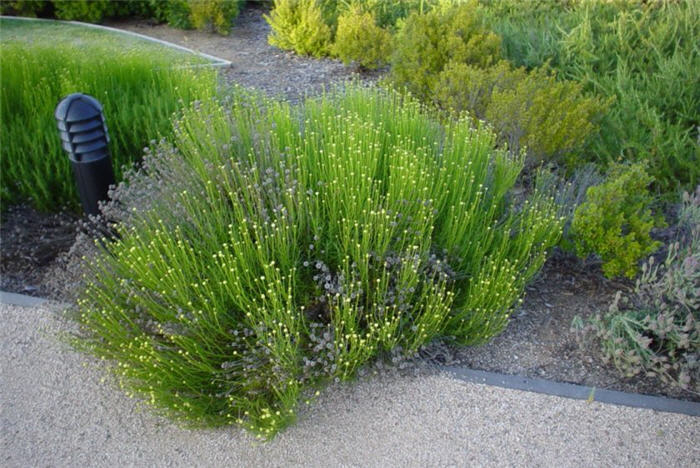| Botanical Name: Santolina rosmarinifolia | |
| Common Name: Rosemary-leafed Santolina |

-
Anatomy
-
Culture
-
Design
Plant Type
Perennial
Height Range
1-3'
Flower Color
Yellow
Flower Season
Spring
Leaf Color
Green
Bark Color
n/a
Fruit Color
n/a
Fruit Season
n/a
Sun
Full
Water
Very Low, Low
Growth Rate
Moderate
Soil Type
Sandy, Clay, Rocky
Soil Condition
Average, Poor, Well-drained, Dry
Soil pH
Neutral
Adverse Factors
n/a
Design Styles
English Cottage, Mediterranean, Ranch, Spanish
Accenting Features
Unusual Foliage
Seasonal Interest
Spring, Summer
Location Uses
Perennial Border, Parking Strip, Raised Planter, Walkways
Special Uses
Fire Resistant, Small Spaces
Attracts Wildlife
n/a
Information by: Stephanie Duer
Photographer:
Photographer:
-
Description
-
Notes
Rosemary-leafed santolina is a tough perennial with a rounded, tidy habit and nearly shrubby constitution. Mostly grown for its foliage, which is clear, bright green, finely textured, and needle-like. It has a musky, resinous scent when crushed. Little lemon-yellow, button-like flowers appear mid to late spring. Though listed as evergreen, it is not always dependably so in our climate. Grows about 12 to 18 inches tall and 20 to 28 inches wide.
Grow in full sun and in well drained soils. Grows in poor soils and becomes floppy if provided with too much water. Trim as needed in mid-spring to shape and tighten foliage, and shear off faded flowers in late summer for a tidy appearance. It will tolerate sun being piled on in the winter, though you will probably have to prune it back come early spring. Parkstrip Value of 3 to 7 sf.